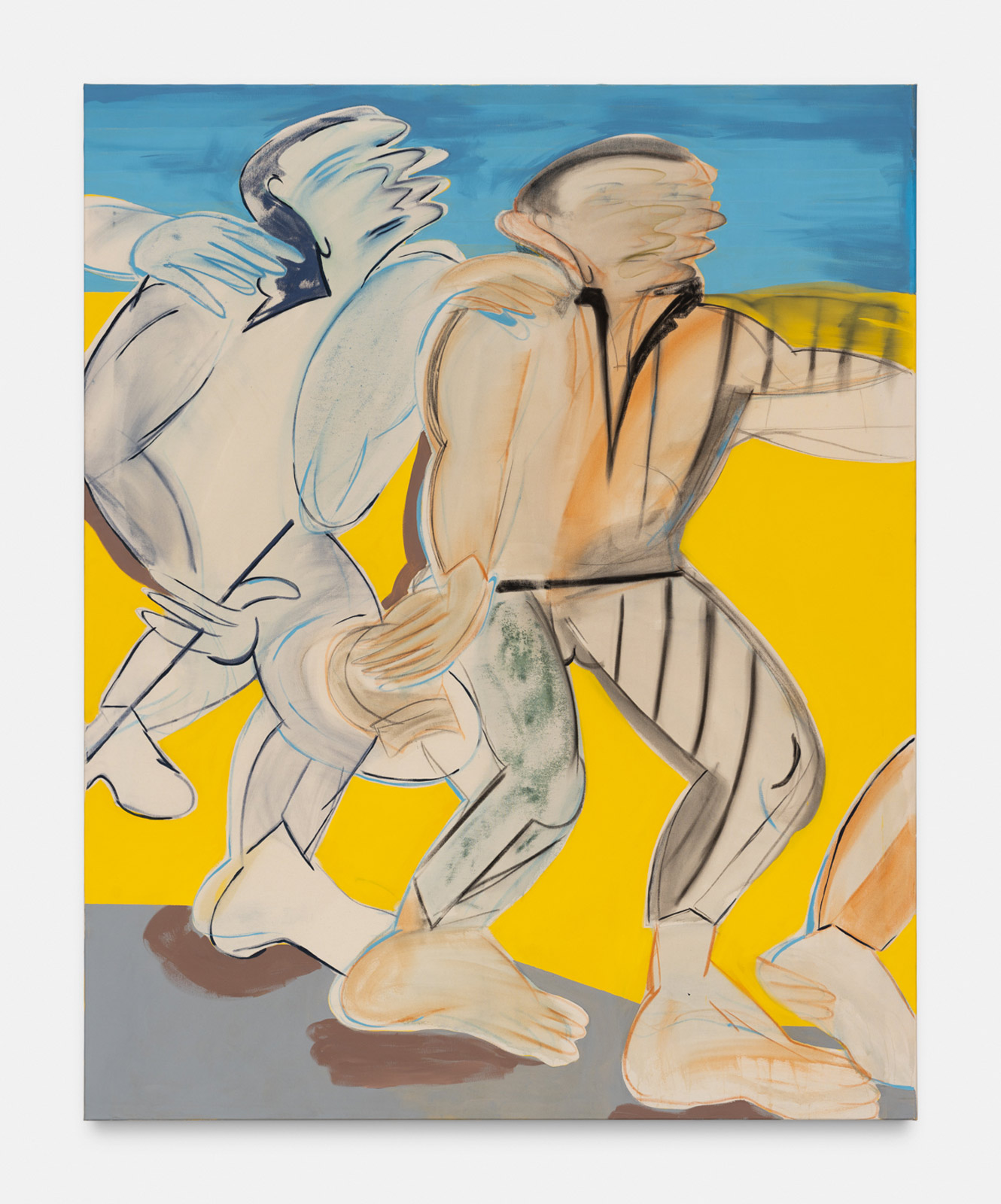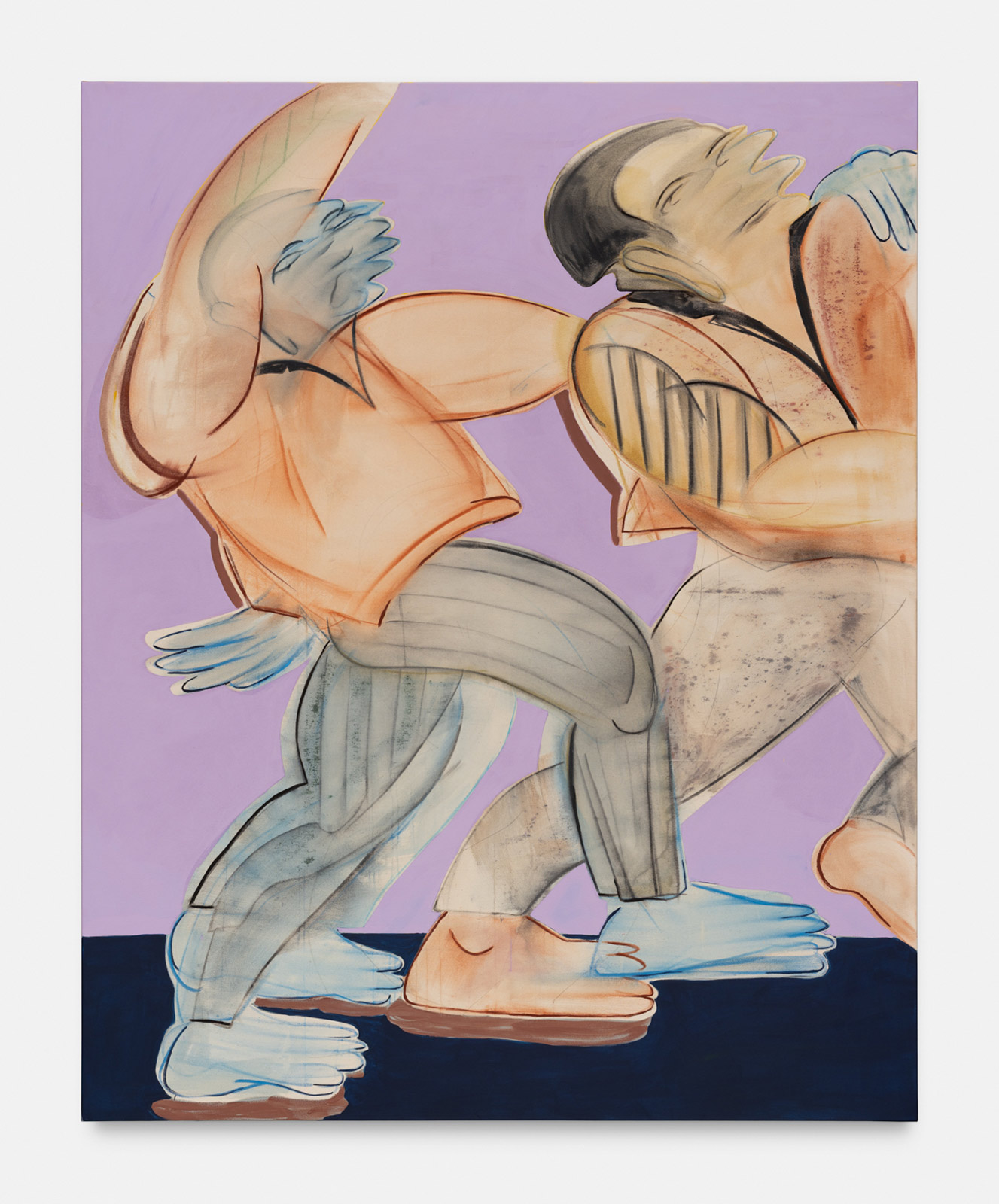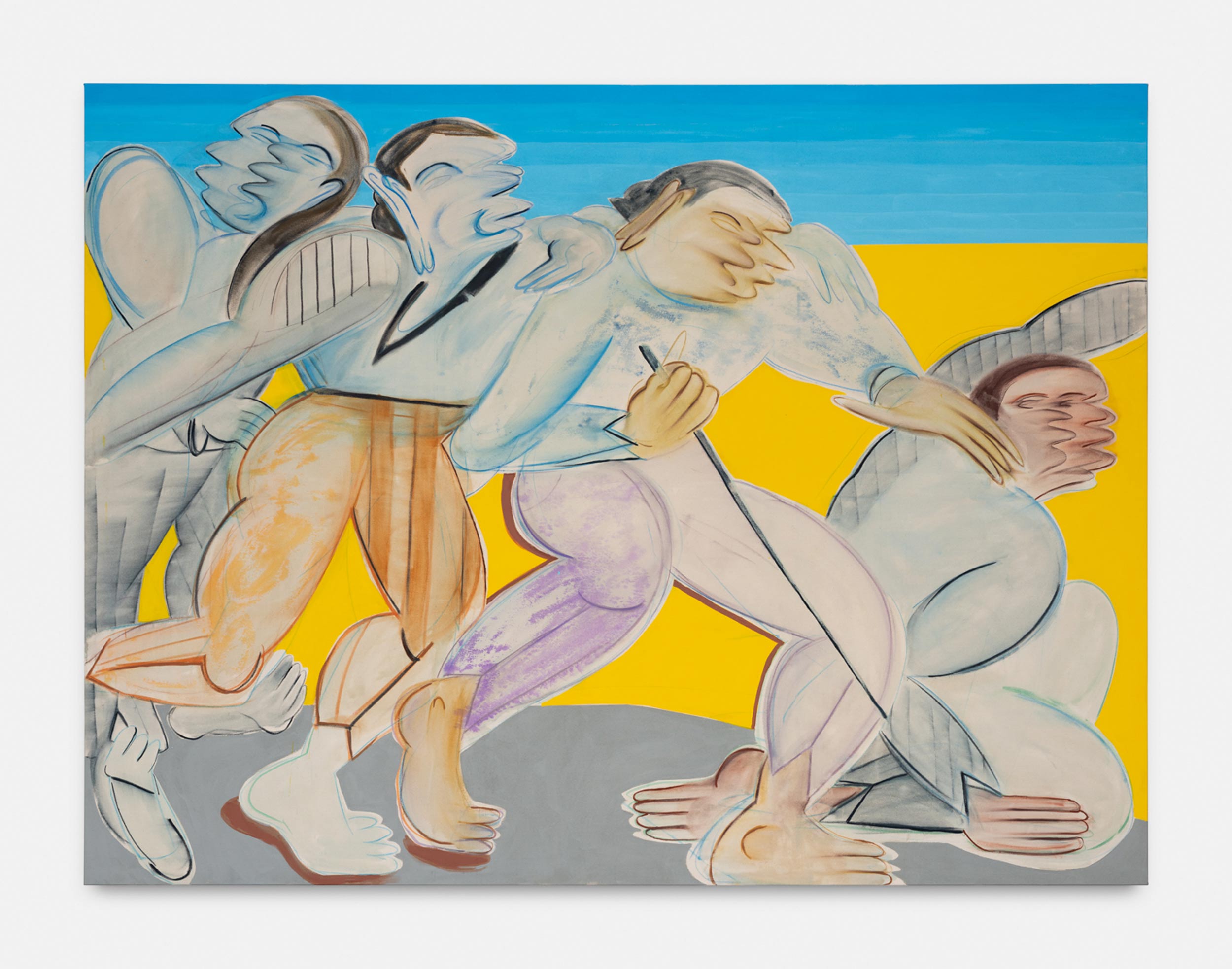The Brussels-born artist joins Document to elaborate on the making of her series's 12 paintings, and the driving influences and artistic philosophies behind them
Anastasia Bay’s The Stumbler’s Parade depicts a scene, each singular painting a moment within it. The works aren’t built to be pieced together like a puzzle, the artist explains, but rather as a carousel, with intentional fragmentation between them giving the effect of rapid movement.
Twelve paintings rendered in soft pastels see various stages of figures tumbling forward. They are distinctly modern in their somewhat caricatural renderings of the human form and in their color palette—warm yellow, soft gray, and shades of blues and purples. But the themes they traverse transcend time, taking direct inspiration from Pieter Bruegel the Elder’s painting The Blind Leading the Blind (1568), which itself is an interpretation of an old Christian parable. The act of falling—of characters tripping into and over one another—has vast ideological application, made to feel more tangible through placement on the gallery walls of Venus Over Manhattan, where life-size figures are hung low, designed to make the viewer feel as if they are at the center of the falling.
Following the opening of The Stumbler’s Parade, Bay joins Document to elaborate on the making of the series, and the driving influences and artistic philosophies behind them.
Megan Hullander: What about Pieter Bruegel the Elder’s painting, which was rendered many centuries ago, resonates with you now?
Anastasia Bay: This painting belongs to a rich period of art history that has had a strong influence on the course of European art. It belongs to those timeless masterpieces that haunt the visual memory of contemporary painters.
The funny thing is that, 10 years ago, my friend, the painter Julien Saudubray, was practicing copying masterpieces to develop his own skills. The Blind Leading the Blind was one of those. He spent several years coming back to this copy, and one day he decided that it was finished and offered it to me.
I have lived with this painting ever since; it is in front of this painting that I have had my coffee while listening to the news. It resonates with every bit of bad news, every ecological disaster, every time the laws are rolled back to give us less freedom, and every incident of police violence. They are there, stumbling over each other, dragging each other into the ditch.
Megan: Why did you choose to construct The Stumbler’s Parade in fragments as opposed to one holistic scene?
Anastasia: I immediately had this image of a big round cycle on a human scale. I wanted people to have the feeling of being caught up in the parade. The characters are on a scale of one-to-one, which allows for a very direct relationship with the viewer. The size and the placement of the works—low-hanging—are important constraints to create the impression of a mirror view.
The fragmentation and the format activate a distancing from the original work; it becomes a subject of archetypal social relationships that can be applied to any situation. It also allows a continuous reading by integrating what happens outside the frame of the painting. The ellipses—a figure of speech in literature, jumps in the text—offer continuity to the reading of the whole.
“The time of the painting is an infinite and suspended time—a time of reflection and of meditation, including mystery for its author, as well..”
Megan: How do the paintings function differently as standalone works?
Anastasia: The paintings are linked by their chromatic coherence and the gradations of falling in the repetition of the movement. Nevertheless, each painting was composed, in a way, to be autonomous. It is not a puzzle, but together these canvases form a carousel installation. The crowd is in movement like a carnival parade.
Megan: Were there any other influences that felt formative to this collection of works?
Anastasia: Certainly, I am always accompanied by unconscious influences.
Megan: Why are you drawn to the removal of context—of any particular place or time—in your work?
Anastasia: I try not to lock the work into one context. There are obviously actual subjects in my work, like abortion, femicide, social deconstruction. But I want to allow the work to exist outside of a political context so that it can be interpreted, and deconstructed, as we do with mythological literature.
The time of the painting is an infinite and suspended time—a time of reflection and of meditation, including mystery for its author, as well. That is, in the sense that the painter is also surprised by the magic which occurs during the realization of a painting.
Megan: How do you choose the colors to background your work with have?
Anastasia: I found this color palette during a stay in Sicily. I was painting with my Brussels palette, and I felt it in deep disagreement with the environment. I felt more like escaping the studio and enjoying the colors outside, so I tried to bring them back to the work. I based the whole series on this first painting.
Megan: How do you approach movement? Do you think of it in terms of narrative, aesthetic, thematic effect, or something else entirely?
Anastasia: The idea of movement appears on several levels: in a narrative way, yes, to show the intention of falling that is proper to the original work, and which aroused my interest. The feeling of falling is a theme that recurs in my work in an unconscious way—the characters train or support themselves. There is the ascent and the fall, so what we do not see in the ellipses are periods of relaxation, reconstruction, and questioning.
Anastasia Bay: The Stumbler’s Parade is on view at Venus Over Manhattan, 55 Great Jones Street, New York through March 11.













